These dairy free sugar cookies are made with oil and are soft and chewy. They are also sweet without being too sweet which is the key to a great sugar cookie.
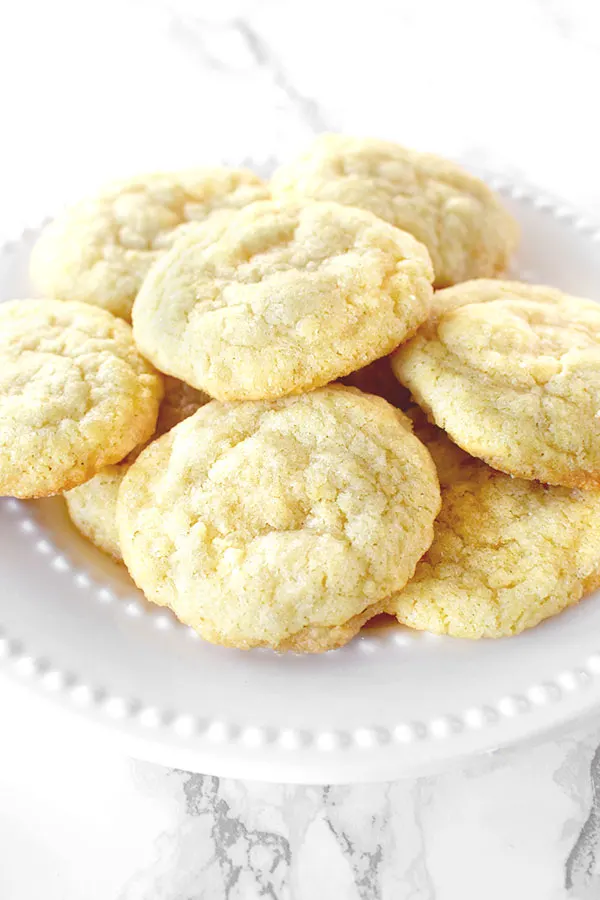
While sugar cookies are most commonly seen around the holidays, these dairy free sugar cookies are too good to only have once a year.
They are sweet and kissed with vanilla but have a subtle flavor.
Since these sugar cookies are made with oil instead of butter, the texture is a little different.
Butter you cream with sugar making the dough kind of... well, creamy.
Oil doesn't create that creamy texture so you have to just create the shape. It's kind of like molding play-dough.
If you feel more comfortable, you can add just a little bit of water to make the dough a slightly wet so it's slightly more similar to the texture you're used to.
Either way these sugar cookies are delicious!
Don't forget to check out these other dairy free desserts.
Are Sugar Cookies Dairy?
Yes, sugar cookies are dairy unless specifically specified otherwise because they use butter to make them.
How do you make sugar cookies without milk?
Actually, most sugar cookie recipes are made without milk.
However, if you have a sugar cookie made with milk, you can simply replace the milk with a dairy free liquid.
Dairy free milks like almond milk or oat milk, water, or even orange juice are good replacements for milk in sugar cookies.
How do you make sugar cookies without butter?
To make sugar cookies without butter you need to replace the butter with another fat. This can be a vegan butter or oil.
What can I use in sugar cookies if I don't have vanilla?
Almond extract can be a delicious replacement for vanilla in sugar cookies.
Making Cookies with Oil
Making cookies with oil is a little bit different than making cookies with butter.
When making cookies with butter, the butter is often creamed with sugar first. Cookies made with oil don't have this step, so they could require a little kneading.
Also, since butter is about 80% fat and 20% water, and oil is 100% fat, you need less oil than you do butter.
However, that could lead to cookie dough with oil being drier to work with. This is not the case with cookies like crinkle cookies, but in most cases, it is.
So, what I like to do is add back some of the water until I get a similar consistency to cookie dough made with butter.
I do this by adding a bit of water at a time and mixing it in before adding a little more until I get the right consistency. This is because I usually find adding the full amount would make the cookie dough too wet.
Do Oil Cookies Need to be chilled?
In most cases, I don't find chilling cookies made with oil necessary.
It is helpful for shaping cookies if you've made them too wet, but kneading in a little flour usually is easier to work with than chilled dough.
The one exception is for cookies you plan to cut out, like sugar cookies or gingerbread cookies.
Dough you need to roll out and cut with cookie cutters will roll out easier if chilled first.
BAKING WITH OIL
Baking with oil produces a moister and tenderer texture compared to that of baked goods made with butter.
Cakes, cupcakes, muffins, and quick breads also tend to bake up taller with a better crumb and stay moist and tender much longer than recipes made with butter.
Also, since oil weighs less than butter, baked goods made with oil have a lighter texture than those made with butter.
In addition, butter is usually only 80% fat, whereas oil is 100% fat. As a result, the water that's present in butter strengthens the gluten in the flour, making it more dense and less tender than baked goods made with oil.
Oil is often used in recipes where a lighter and airier texture is desired or in recipes that call for both oil and butter, in order to have the benefits of oil while keeping the butter flavor.
Which Type Of Oil to Use
I use neutral oils like canola oil, safflower oil, and vegetable oil. You can also use stronger oils like olive oil and coconut oil, but they may change the taste somewhat.
Is it better to use canola oil or olive oil?
Canola oil is relatively cheap and, due to its lack of flavor and high smoke point, is very versatile.
Olive oil, on the other hand, is healthier. Also, its stronger flavor makes it preferable in recipes such as focaccia, which require its distinct taste.
Baking with Oil Conversion Chart
If you want to convert your butter recipes to oil recipes, take a look at my baking with oil - butter to oil conversion chart.
How to store Oil
Store oils in a cool, dark place to prevent them from becoming rancid.
If refrigerated, some oils, like olive oil, may solidify, but will return to a liquid state at room temperature.
Coconut oil begins to solidify in temperatures under 76ºF or 25ºC.
HOW TO MEASURE FLOUR AND OTHER DRY INGREDIENTS
The best way to measure dry ingredients is with a scale. However, this is not commonly done in the United States, where dry measuring cups are used instead.
To measure most dry ingredients, first spoon them into a dry measuring cup and then level off the measuring cup with an upside-down butter knife.
Make sure not to pack it down because it can lead to using more of the ingredient than called for.
The exception is brown sugar. To measure brown sugar, pack it into the measuring cup and then level off any excess.
To measure chocolate chips, nuts, or dried fruit, just pour them in and then level them off.
DRY VS LIQUID MEASURING CUP
Dry measuring cups are a set of cups that often come with measuring spoons. Each cup is a different measurement just like each spoon is a different measurement.
Liquid measuring cups, on the other hand, are cups that have measuring lines on the side to mark the measurements.
The problem with using liquid measuring cups to measure dry ingredients (like flour and cocoa) is that they are powders. So, as you shake the cup to level them off, the powders settle and you end up with more than you need.
I tested this with a friend who didn't believe me and we ended up with a number of tablespoons more than the recipe called for.
WHY sift Powdery Ingredients
There are a number of benefits to sifting powdery ingredients like flour and cocoa.
First of all, flour is often sifted before use to aerate it and remove any lumps. This helps in achieving a lighter texture in baked goods.
Secondly, if you measure flour that's just been sifted, you can get a more accurate measurement than from flour that's been packed tightly in a bag.
In addition, sifting dry ingredients together, such as flour, cocoa, and baking powder, helps make sure they're evenly dispersed.
Sugar
The primary role of sugar is to be a sweetener. However, sugar also contributes to the tenderness and moistness of the baked good by absorbing and retaining moisture and helps create the golden brown color when baking as it caramelizes.
Recipes with more sugar often result in softer, moister textures. However, I learned the hard way that too much sugar leads to a sticky mess.
When it's heated, sugar caramelizes, resulting in a rich, complex flavor and a brown color. This adds both flavor and color to baked goods and is also the process in which caramel sauce, dulce de leche, caramel candies, and regular candies are made.
When used in recipes containing yeast, the sugar is eaten by the yeast, producing carbon dioxide and causing the dough to rise.
Sugar also acts as a preservative in jams, jellies, and fruit preserves by reducing water activity and preventing microbial growth.
There are many different types of sugar, including white sugar, brown sugar, vanilla sugar, powdered sugar, turbinado sugar, and demerara sugar.
When a recipe calls for “sugar” without specifying anything else, it's referring to regular white sugar.
White Sugar
White sugar (sometimes called granulated sugar, table sugar, or white granulated sugar) is made of either beet sugar or cane sugar, which has undergone a refining process.
It is the easiest to find and most commonly used.
Brown Sugar
Brown sugar is white sugar with molasses added to it.
It is commonly used in chocolate chip cookie recipes, and it’s rare for a recipe that calls for brown sugar not to also call for white sugar as well.
When a recipe calls for “brown sugar” but doesn’t specify what type (light or dark), it is referring to light brown sugar.
In my recipes, you can use whatever type of brown sugar you have on hand, whether it is dark brown sugar, light brown sugar, or demerara sugar - which is very common in Israel.
Just keep in mind that the flavor and color will be slightly different, depending on what you choose to use.
Turbinado Sugar
Turbinado sugar is better known as "raw sugar." But, despite this name, the sugar is not really “raw.”
Instead, it's partially refined sugar that retains some of the original molasses.
The term "raw sugar" may also give off the impression that it is somehow healthier.
In reality, turbinado sugar is nutritionally similar to white sugar.
Demerara Sugar
Demerara sugar is very popular in Israel and is especially delicious in tea, but is also used for baking.
Unlike white sugar, demerara sugar undergoes minimal processing and retains some vitamins and minerals.
However, it is still not much healthier than white sugar.
Vanilla Sugar
Vanilla sugar is not very common in the States. However, it is common in Israel and parts of Europe.
This is sugar that sat for an extended period of time with vanilla beans, giving it a vanilla flavor.
Caster Sugar
This type of sugar is common in the United Kingdom.
It has a grain finer than white (granulated) sugar and larger than powdered sugar.
Caster sugar is often called for in recipes for delicate baked goods like meringues, souffles, and sponge cakes.
You can use a 1:1 conversion rate between caster sugar and white (granulated) sugar.
Powdered sugar
Powdered sugar, sometimes known as confectioners’ sugar, is a sugar with a powdered texture.
This sugar is rarely used for baking. Instead, it is used for dusting desserts and making frosting, icing, and glazes.
In some countries, you can also find powdered vanilla sugar.
It is made the exact same way regular vanilla sugar is made. However, the sugar used is powdered instead of granulated.
Vanilla Extract vs Vanilla sugar
In my recipes, I don’t specify what kind of vanilla to use.
The reason for this is that in the States, vanilla extract is exclusively used.
Meanwhile in Israel, along with many European countries, vanilla sugar is common.
In most, if not all recipes, both vanilla extract and vanilla sugar can be used.
In recipes where vanilla sugar can be used instead of extract, you can replace them 1:1.
Replacing Sugar with Honey
If you’d prefer to use honey instead of sugar, you can do so with pretty good results.
Honey can be two or even three times as sweet depending on the honey, so for every 1 cup of sugar, you can use ½ to ⅔ cup honey.
Since honey adds liquid, you need to remove some to balance it out. For every cup of honey, remove a ¼ cup of liquid.
Also, it burns faster than granulated sugar, so you want to lower the baking temperature by 25 F. In addition, check it early and often to avoid burning or overbaking.
How to Store Sugar
Sugar should be stored in an airtight container to prevent clumping and moisture absorption, and kept in a cool, dry place.
Types of Vanilla
Vanilla comes from a pod commonly known as a “vanilla bean”, which comes from the vanilla orchids.
Vanilla pods have been used for flavoring since the Aztecs and was introduced to Europe by a Spanish conquistador, along with cocoa.
Vanilla Extract
Vanilla extract is created by soaking vanilla beans in alcohol for some time. This is the most commonly used type of vanilla.
Vanilla Sugar
Vanilla sugar is common in Europe and some parts of the Middle East, like Israel.
It is made from vanilla beans sitting in sugar, vanilla bean powder mixed with sugar, or sugar mixed with vanilla extract.
In some countries, like Italy, you can also find vanilla powdered sugar, which is used for confections.
Vanilla Paste
Vanilla paste is generally a specialty item. It is a thick paste that contains a blend of the scraped-out vanilla pod seeds and vanilla extract.
You can use it as you do vanilla extract and it will leave flakes of vanilla bean like you see in vanilla bean ice cream.
Imitation Vanilla
Imitation Vanilla, otherwise known as artificial vanilla or vanilla essence, is made from synthetic vanilla.
This is the compound that naturally occurs in vanilla beans and gives it its flavor.
Can I use imitation vanilla?
Many will tell you that you should use high quality vanilla, just like they say you should use the best cocoa.
However, most of us will probably not be willing to pay the hefty price that comes with exceptionally high-quality ingredients.
Overall, vanilla is very expensive, so the extract is as well.
So, if you’re not going to get regular quality vanilla extract, you might as well use imitation vanilla.
Can vanilla extract be used as a substitute for vanilla beans?
Yes, vanilla extract can be used as a substitute for vanilla beans. Use about 1 teaspoon of vanilla extract for each inch of vanilla bean.
How to Store Vanilla
Pure vanilla extract and other vanilla products should be kept away from heat and light, and should be stored in an airtight container in a cool, dark place.
DO EGGS NEED TO BE AT ROOM TEMPERATURE?
The short answer is "no." While a side-by-side comparison shows that baking with eggs at room temperature makes a better crumb, it’s not otherwise noticeable.
What are Eggs used for?
Eggs do three things in most recipes: they help bind the ingredients together, act as a mild leavening agent, and they add moisture.
ARE EGGS DAIRY?
No, eggs are not dairy. Dairy is milk and any food products made from milk, including cheese, cream, butter, and yogurt.
So, while eggs are an animal product, they are not dairy. In fact, eggs fall under the protein food group.
How to tell if your eggs are still good
Fill a glass with cool water and submerge the eggs.
If the eggs sink to the bottom and lay flat on their side, they're still fresh.
If they sink, but stand on one end at the bottom of the glass, the eggs are not as fresh but still good.
An egg that floats to the top is likely spoiled.
EGGLESS OPTION
Eggs can be substituted with ¼ cup of unsweetened apple sauce per egg. This means that for recipes calling for 2 eggs, you’d need ½ cup of unsweetened apple sauce.
The reason applesauce makes a good binder is that it's high in pectin. Pectin is a naturally occurring starch in fruits and berries that acts as a thickening agent and stabilizer in food.
This happens when combined with sugar and acid (if the fruit or berry isn't naturally acidic).
Just keep in mind that it may change the flavor slightly.
BAKING SODA VS BAKING POWDER
Both baking soda and baking powder are leavening agents, which means that they help baked goods rise. However, they're not the same thing and they are not interchangeable.
Using baking soda instead of baking powder can give your recipe a terrible metallic taste, while using baking powder instead of baking soda leaves your baked goods looking flat.
BAKING SODA
When baking soda (also known as sodium bicarbonate) is combined with acidic ingredients and exposed to heat, it causes batter or dough rise and contributes to their light and fluffy texture.
However, baking soda is a versatile ingredient. It can be sprinkled over meat to tenderize it and it can be added to tomato sauce to neutralize the acidity.
Baking soda, when combined with an acid - such as cream of tartar, lemon juice, buttermilk, cocoa, and vinegar - creates carbon dioxide. When the carbon dioxide is released, it causes the familiar texture and crumb in pancakes, cakes, quick breads, soda bread, and other baked and fried foods.
A good rule of thumb is to use around ¼ teaspoon of baking soda per 1 cup of flour.
BAKING POWDER
Baking powder is created by combining baking soda, cream of tartar, and sometimes cornstarch.
Since baking powder already contains an acid, it's most often used when a recipe does not call for an additional acidic ingredient or calls for too little of one.
There are two types of baking powder. Single-acting baking powder and double-acting baking power.
Single-acting baking powder gets activated only once - when it gets wet.
Most baking powder sold is double-acting. This means that the leavening occurs in two steps.
The first is when the baking powder gets wet, which is why you cannot prepare some batters ahead of time to bake later. The second step is when the baking powder is exposed to heat, which happens when the batter is baked or fried.
A good rule of thumb is to use around 1 teaspoon of baking powder per 1 cup of flour.
WHY SOME RECIPES CALL FOR BOTH
Some recipes use both baking soda and baking powder because they need extra leavening that the baking soda alone cannot provide.
In these cases, baking soda provides an initial lift, while baking powder provides additional rise.
WHICH ONE IS STRONGER?
You may have already guessed the answer since baking soda is used to make baking powder and you need more baking powder per cup of flour. But I’ll tell you anyway.
Baking soda is four times stronger than baking powder.
That's why you will, more often than not, see recipes that only call for baking soda rather than recipes that only call for baking powder.
HOW LONG DO THEY LAST?
BAKING SODA
Baking soda is good indefinitely past its best by date, although it can lose potency over time.
A good rule of thumb is two years for an unopened package and six months for an opened package.
However, to be honest, I’ve used very old baking soda with good results.
BAKING POWDER
Like baking soda, baking powder is good indefinitely past its best by date, and can lose its potency over time.
For both opened and unopened, it’s ideal to use it within nine months to a year.
While storing it, make sure to keep it in a dry place and away from humidity.
HOW TO TEST IF IT’S STILL GOOD
BAKING POWDER
To test baking powder, pour 3 tablespoons of warm water into a small bowl, add ½ teaspoon of baking powder, and stir.
If the baking powder is good to use, it should fizz a little.
BAKING SODA
To test baking soda, pour 3 tablespoons of white distilled vinegar into a small bowl, add ½ teaspoon of baking soda, and stir.
The mixture should rapidly bubble if the soda is fresh.
Baking with Humidity
Humidity can have a big impact on how your baked goods come out.
This is because when humidity is extremely high (think 70 percent or more), baking ingredients like flour, sugar, salt, baking powder, and baking soda soak up moisture from the air.
This can negatively impact the outcome of your cakes, cookies, yeast breads, and quick breads.
There are some things you can do to try to save your baking.
Try to counterbalance the additional moisture
To help counterbalance the additional moisture your dry ingredients soak up from the air, try reducing the amount of liquid in the recipe by about one quarter.
If the batter or dough looks too dry once all the ingredients are mixed together, add additional liquid a tablespoon at a time until you have the desired consistency.
This is not usually possible to do for cookies, but it does work for cakes and breads.
Store Ingredients in the Fridge
If flour and sugar are stored in the refrigerator or freezer rather than in a cupboard or pantry, they are better protected from humidity.
As an added benefit, keeping these ingredients cool also helps keep them fresher longer, in addition to helping them stay bug-free.
For the best results, let them warm to room temperature before using.
Bake for Longer
If you bake your goodies for a few extra minutes, it can help the liquid to cook off.
To avoid overbaking, continue testing for doneness every couple of minutes for breads, quick breads, cakes, cupcakes, and muffins. Cookies, on the other hand, need to be checked every minute.
Use Air Conditioning
To help lower humidity levels on humid summer days, air condition the room for at least an hour before you start baking.
Cooler air isn’t able to hold as much moisture as warm air.
Store your baked goods in an airtight container
Humidity can also ruin your fresh-baked goods because when they are left out, they can absorb moisture.
To avoid this, store them in an airtight container or resealable bag.
Adjusting for a Convection Oven
Convection ovens blow the hot air around, producing around 25 to 30 percent more heat.
Since convection ovens produce more heat, you need either lowering the temperature or shortening the cooking time to compensate.
When recipes specify temperatures and cooking times, it’s for conventional ovens, unless specified otherwise.
A simple rule to follow is to lower the temperature by 25ºF or 14ºC when baking cookies and pies, and 50ºF or 28ºC when roasting meat and poultry. Some convection ovens offer separate settings for baking and for roasting.
You can also leave the temperature the same and instead, shorten the cooking time by 25 percent. For example, if your recipe calls for 60 minutes in the oven, check the food after 45 minutes instead.
However, keep in mind, some convection ovens actually make a heat adjustment for you. That is, if you set a convection oven for 350ºF, it might actually set itself to 325ºF to compensate. So, check your manual before making adjustments.
TROUBLESHOOTING
WHY IS IT TAKING LONGER THAN DESCRIBED TO BAKE?
Over time the thermostat on ovens gets a little off causing some ovens to run hot and others to run cool. This is why recipes tend to say things like “10 to 15 minutes or until golden brown.” So, if it takes you longer than expected that’s fine, don’t worry about it, just keep baking until ready.
WHY DID MY RECIPE COME OUT TOO DRY?
Just like some ovens run cool, others run hot. If you’re oven runs hot bake these at a lower temperature. Ideally, you should get an oven thermometer to know what temperature you’re really baking at.
HOW TO STORE COOKIES
Let cookies cool completely. Place in a resealable bag or an airtight container. Store at room temperature for up to a week.
HOW TO FREEZE COOKIES
Let cookies cool completely. It is best to freeze cookies on a tray so that they freeze as individuals. Then, move to a resealable freezer bag.
If this is not practical for you, place cooled cookies in a resealable freezer bag and freeze that way.
Cookies will keep for up to 3 months. After that, the quality begins to degrade.
When thawing baked cookies, remove from bag and let sit at room temperature.
If desired, you can gently reheat thawed cookies to mimic that fresh-baked taste and texture: place them in a 275°F or 135°C oven until soft.
Sugar Cookies Tip:
Put only one cookie tray in at a time. When I put in two, filling the whole middle shelf, the cookies browned too much on the bottom.
Dairy Free Sugar Cookies
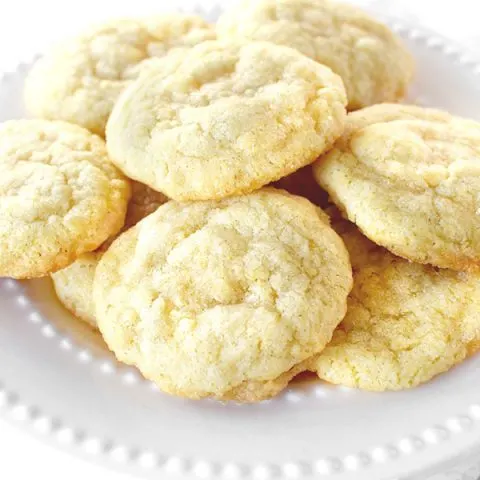
These dairy free sugar cookies are made with oil instead of butter and are perfectly soft and chewy!
Ingredients
- 2 ¾ cups all-purpose flour (330 grams)
- 1 ½ cups white sugar (300 grams)
- 1 teaspoon baking soda
- ½ teaspoon baking powder
- ½ teaspoon salt
- 2 eggs
- ¾ cup oil (175 milliliters)
- 1 to 2 tablespoons water
- 2 teaspoon vanilla
Instructions
- Whisk together flour, sugar, baking soda, baking powder, and salt in a mixing bowl.
- Add eggs, oil, water, and vanilla to the dry ingredients. Use your hands to mix until well combined.
- Create balls from the dough. Teaspoon sized for smaller cookies and tablespoon size for larger cookies. Place on a parchment paper lined baking sheet.
- Bake on the middle shelf at 350°F or 175°C for 10 minutes. Remove and let cool for 3 minutes before moving a cooling rack.
Recommended Products
Some of the links below are affiliate links, which means that if you choose to make a purchase, I will earn a small commission. This commission comes at no additional cost to you.
Nutrition Information:
Yield:
36Serving Size:
1Amount Per Serving: Calories: 113Total Fat: 5gSaturated Fat: 0gTrans Fat: 0gUnsaturated Fat: 4gCholesterol: 10mgSodium: 75mgCarbohydrates: 16gFiber: 0gSugar: 8gProtein: 1g
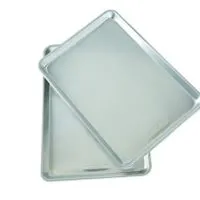
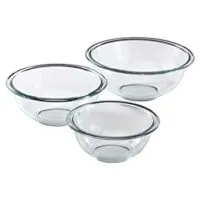
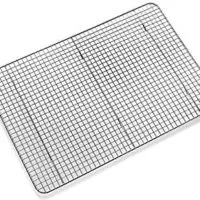
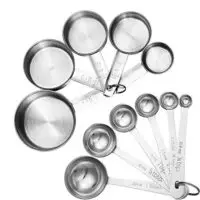
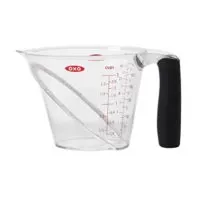
Thursday 9th of January 2025
My granddaughter has a true dairy allergy and we are very conscious of every ingredient. Thank you for helping us serve her a variety of foods! I have a question though. Have you ever tried making these with the dairy free butter that they now sell? I wonder if that would help with the consistency and maybe even allow you to roll and cut?
ElissaBeth
Friday 10th of January 2025
I'm so glad my recipes were able to help ❤️ Personally I like using oil but if you want to use vegan butter, replace the oil with 1 cup of better. You can then technically probably roll out the dough, but this recipe isn't meant to be those kinds of sugar cookies. I do have a recipe for cut out sugar cookies though. They also call for oil but you can use a cup of vegan butter instead of the oil in that recipe too.
Friday 22nd of December 2023
How many cookies does this recipe make?
ElissaBeth
Friday 22nd of December 2023
About 35
Katy
Sunday 5th of December 2021
Can I roll this dough out and use cookie cutters or does the dough not hold up?
ElissaBeth
Wednesday 8th of December 2021
I'm sorry, this dough is better suited for balls... I am planning on putting one up for cookie cutters though :)
Piama
Monday 22nd of November 2021
Do you think I could use this recipe for roll out cookies?
ElissaBeth
Sunday 12th of May 2024
These sagar cookies would be terrible if you tried to roll them out, but my other sugar cookies are perfect for rolling out and cutting into shapes.
hanah
Wednesday 2nd of June 2021
my friend unfortunately can't have dairy so I made these for her and she absolutely LOVED them!
ElissaBeth
Sunday 13th of June 2021
I'm very glad to hear it :)